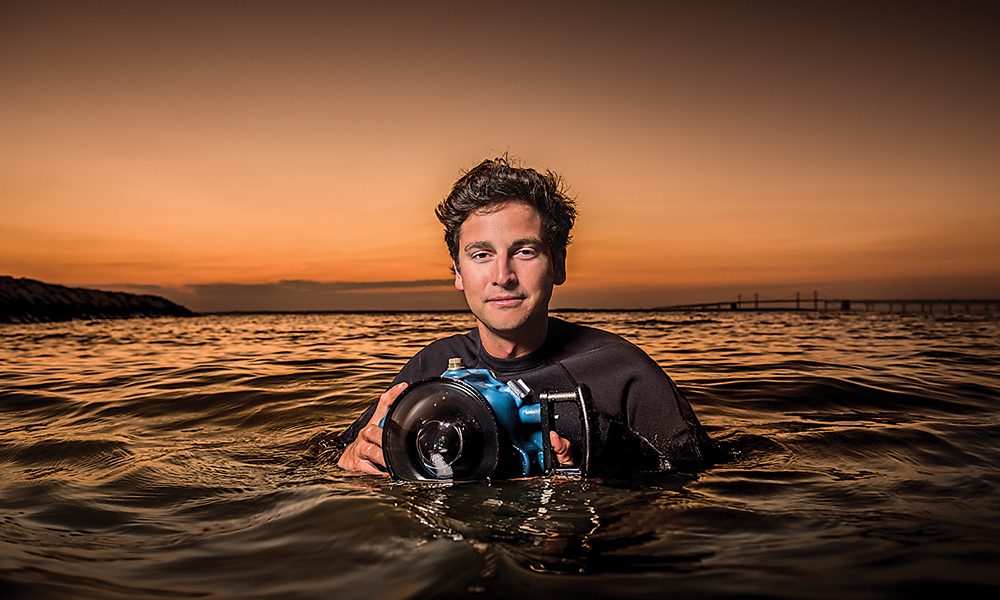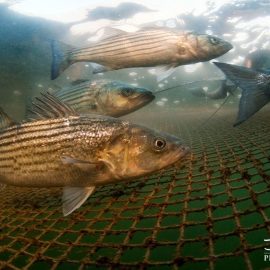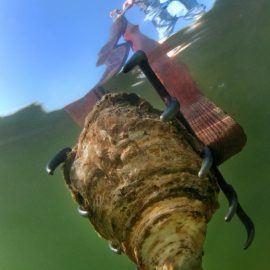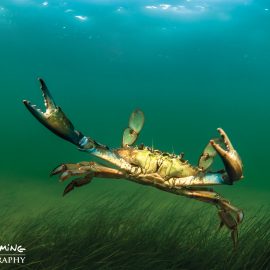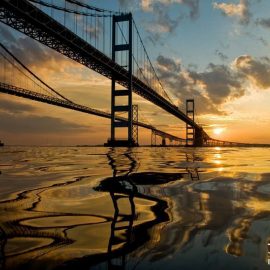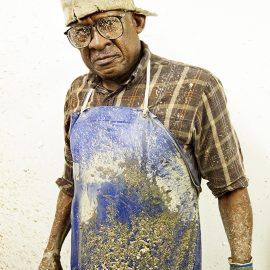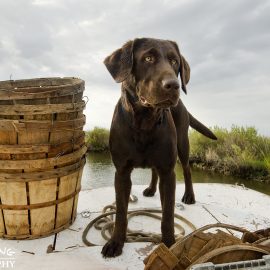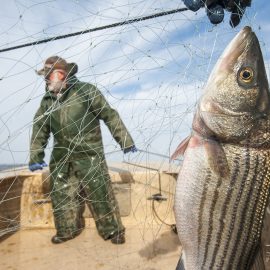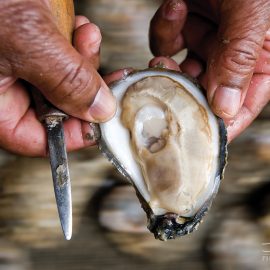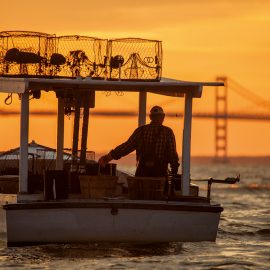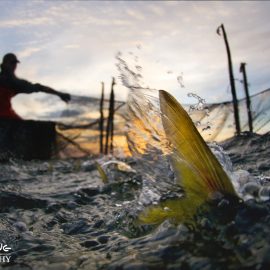Arts & Culture
Big Picture
A notable Annapolis photographer makes his literary debut.
As he looks through his photographs, Jay Fleming becomes an encyclopedia of the Chesapeake Bay. He talks about the weight of a pound net teeming with rockfish, or the life cycle of a blue crab, shedding its shell. He throws out names you’ve never heard before, let alone associated with our waters—sugar toads, ribbonfish—and remembers every weathered waterman he has met along the way.
“There’s a lot more to the bay than crabs, oysters, and rockfish,” he says. “Spend enough time swimming around the grass beds and you’ll be amazed at what you can find.”
Fleming, 29, is flipping through the pages of his first book, Working the Water, a visual narrative of our state estuary, but his story goes back even further, to his childhood in Annapolis, where he inherited a love for photography and the outdoors from his father, Kevin, then a National Geographic photographer. From an early age, with his dad’s hand-me-down Nikon, Fleming created his own aesthetic, heading out on nearby waters with little more than a kayak and film.
By the time he reached his 20s, after stints at the Department of Natural Resources and Yellowstone National Park, Fleming decided to pursue photography full-time, focusing his lens on the majestic waterway where he grew up. From winter through summer, he explored its characters and creatures, waking as early as 2 a.m. to travel all over the bay—by buyboat, clam rig, skipjack, even his own trusty kayak—snapping everything from fish and crustaceans to bivalves and turtles in Maryland and Virginia. Beyond the wildlife, Fleming endeavored to document the culture of Chesapeake watermen and their communities.
“Some were apprehensive at first,” he says with a smile. “But now those same people have become great friends.”
After three years, Fleming’s 280-page coffee-table book hits shelves this month, filled with poignant portraits and a breathtaking snapshot of life on the bay.
“If I had more time, I could have done even more,” he says. “The more I went out, the more I learned, and the more I realized how many people still make a living off the water. I saw how the industry was aging and how many people who were passing away had seen parts of the bay and its culture that we’ll never see again. That has motivated me to keep taking pictures.”
